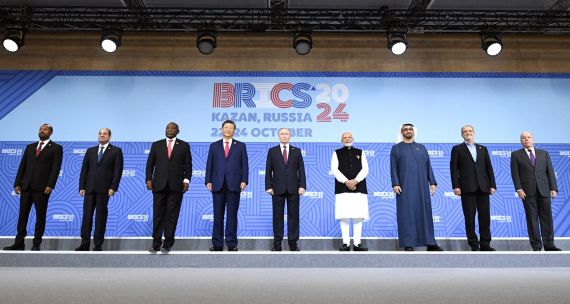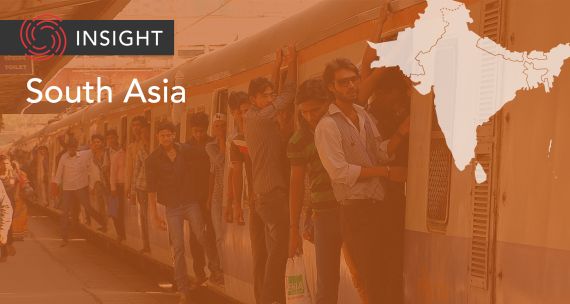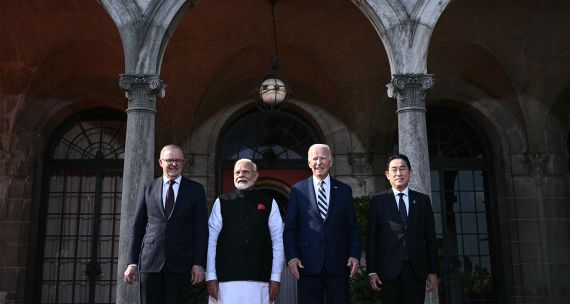How can you effectively transport more than one billion people? It is a question that India's policy-makers grapple with every day. The integration of public and private transportation systems across a country comprising the world's seventh-largest land mass and second-largest population is not easily accomplished. From planes, trains, and automobiles to buses and rickshaws, regional and national travel in India has many options with many limitations. The magnitude of domestic transportation leaves the Indian government without the funding to match the cause.
India's 2017-18 budget for all transportation infrastructure is the equivalent of C$46.8B. With the end of India's final Five-Year Plan in 2017, the budget outlines the country's ongoing priorities. It includes the implementation of a Metro Rail Policy to manage mass rapid urban transit systems, an increase in budget allocation in highways, the identification for new roads for construction and development, and operations and maintenance support for select airports.
Across these policies and programs, one primary constant is the suggested opportunity of foreign private investment in transportation endeavours across the country. However, is private capital from abroad the silver bullet to solve the breadth of issues facing transportation in India?
Road, Rail, and Air: A Transportation Labyrinth
Private vehicles – from auto rickshaws to cars and everything in between – pack Indian roads and highways at a rate of nearly one vehicle per household. Citizens in India are highly dependent on private modes of transportation, which even include walking and cycling. As such, road conditions and accessibility are of utmost importance to domestic transportation. Unfortunately, the number of vehicles in India – mostly motorcycles – is growing much faster than the population, and in effect faster than the government's ability to increase capacity for road infrastructure.
In rural India, most citizens are dependent on bicycles and motorcycles, and are more likely to travel by motorcycle than by bus. This poses a transportation problem not only for traffic congestion and pollution, but for infrastructure capacity. Many highways require extensive road and highway upgrades and connectivity improvements, despite the National Highway Development Project's ongoing efforts. Though the 2017-18 budget aims to improve this issue by increasing funding for highways from 57,976 to 64,900 crore rupees, or C$11.2B to C$12.6B, it is unlikely that this amount will suffice for the proposed 2,000 new kilometres of coastal connectivity roads identified for construction, as well as the much-needed upgrades required throughout the country.
The Shared Vehicle: A Failing Necessity
Contrary to rural trends, buses are the most popular and convenient mode of transportation in urban cities. Unfortunately, bus users see the need for both road and highway upgrades and bus vehicle and system improvements. Though more than 1.6 million buses are registered in India, bus transportation has not been able to meet the growing travel demand. Unfortunately, it is unlikely to do so any time soon, given that the 2017-18 budget does not include funding for bus vehicle and system improvement.
Linking Cities Rail by Rail
In 1853, India's first passenger train, a 14-car steam locomotive, bridged the distance between Bori Bunder station in Bombay and Thane, 39 kilometres away. It was the first step toward what is now the world's fourth-largest railway network, operating both long-distance and suburban trains. Much of the debate around infrastructure capacity revolves around India's railway systems, which are often paralyzed by capacity issues.
Currently, state-owned Indian Railways is responsible for all rail transportation in India, and the newest budget includes a total capital and development expenditure of railways at approximately C$25.4B. The budget's notable goals include 3,500 kilometres of railway lines to be commissioned, 25 stations to see redevelopment, and 7,000 stations to be fed with solar power. This will be followed in 2019 by the installation of composting toilets, also known as bio toilets, on all coaches of Indian Railways. In order to reach these goals, the budget introduced Metro Rail Policy 2017 to facilitate the installation of mass rapid transit systems, and the Metro Rail Act to update existing laws to encourage more foreign private funding in the form of public-private partnerships to develop the system,
The Struggle to Take Flight
In 2016, 100 million domestic air transport passengers flew through India's skies. With such magnitude, it is not surprising to see that India's government has a deep vested interest in the industry. The Airports Authority of India under the Ministry of Civil Aviation is responsible for creating, upgrading, maintaining, and managing civil aviation infrastructure in India; however, there is evidence that challenges lie ahead.
Flight concentration and aviation capacity are the major issues facing Indian air transport. While there are 450 airports in the country, only 75 are operational, and the top 6 airports account for two-thirds of domestic air traffic. It is in response to such trends that the government plans to build more airports in smaller cities, and has identified 160 unserved or underserved airports and air strips with state governments that could benefit from revival plans.
Is Private Capital the Silver Bullet to India's Transport Needs?
Meeting India's transport needs is going to be expensive. Prime Minister Modi committed the equivalent of C$74.2B in early 2017 to upgrade the country's railways, airports, and roads.
This followed a 2016 statement by Finance Minister Arun Jaitley, who commented that while the starting point for massive development should come from public finance, it is only when public finances are committed that India can start attracting investment from private funds.
Minister Jaitley also highlighted that, over the next decade, India will require nearly C$1.9T to fill its infrastructure gap. At the current rate of over C$74B per year – an already unsustainable amount of government funding for infrastructure – it would take the government over 20 years to reach the funding required for 10 years.
In order to bridge the infrastructure financing gap, the government will have to rely on private capital from abroad. The Indian government plans to sell shares in its state-owned rail companies, allow the former state-owned Airports Authority of India to monetize land holdings, and allow foreign companies to invest in domestic metro systems. And, although there is a need for private expertise and capital to ensure the viability of Indian transportation infrastructure, it remains unclear as of yet whether the current amount of private investment will be enough.
Looking Forward
Although India's transportation infrastructure financing gap is wide, what appears promising is India's ability to court international investment, particularly in metro system development.
With international multinationals such as Bombardier Inc. and General Electric Co. already setting up factories in the country, a past joint venture between Russian and Indian companies executed, and state meetings being conducted with CEOs in China and South Korea regarding Indian metro rail projects, the future of transportation in India may pose a promising international business opportunity.
Whether it is domestic or foreign capital, investment in India's transport system will have to consider the needs of both rural and urban populations. We see that rural areas would likely better support spending on road and highway upgrades, while urban populations would prefer an upgrade of the bus system. In the past, severe road congestion, road accidents, and air pollution have eroded Indians' confidence in their public transportation systems. And if the focus will be on improving transportation systems for urban populations, rural populations may be left in the dust, without the adequate road, bus, or rail upgrades needed to take them where they need to go.
Click here to download our digital chapbook of the entire Inside India series, or read our blogs, below . . .
1. The Path to Becoming an Economic Juggernaut
2. What Has “Make in India” Made for India?




